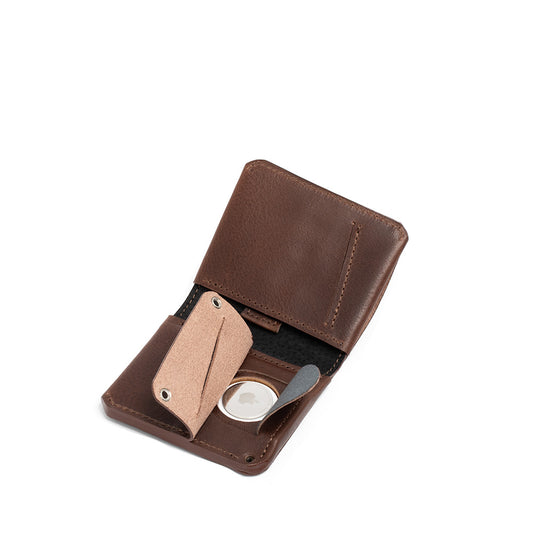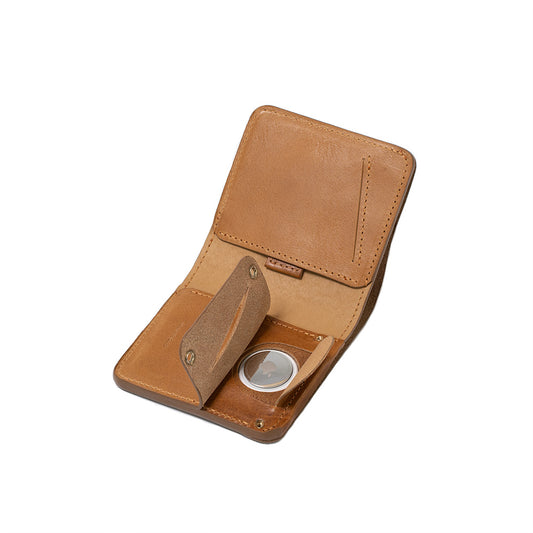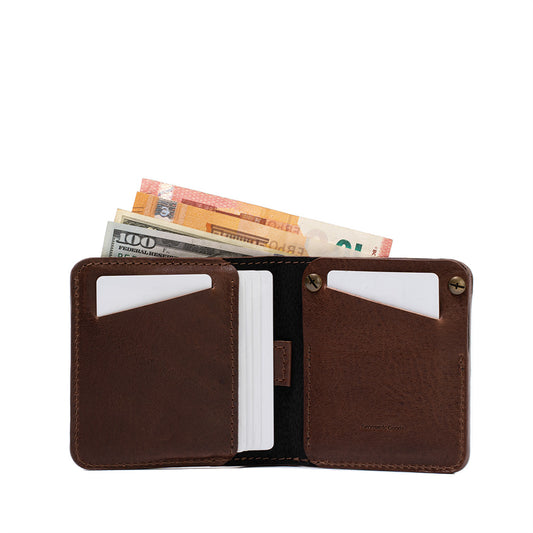
Traveling with your iPhone? Prep these iOS security features for peace of mind.
When you’re on the go, your iPhone can be a lifeline – for navigation, communication, payments, and more. It’s smart to take a few minutes before your trip to enable or double-check certain security and emergency features in iOS. Apple has been steadily adding tools to help travelers: from locating a lost device and sharing your whereabouts with loved ones, to contacting emergency services (even off the grid) and protecting your data from thieves or prying eyes. Below we’ll explore some key iOS 26 features that can keep you and your information safe during your adventures, and how to use them effectively.
Find My iPhone (and Friends)

Losing your phone while traveling is a worst-case scenario – so make sure Find My iPhone is enabled on your device. Most users have this on by default when signed into iCloud, but it’s worth double-checking under Settings > [Your Name] > Find My > Find My iPhone. This feature lets you locate a missing iPhone on a map, play a sound to help pinpoint it, mark it as lost (which locks it and can display a message), or even erase it remotely if you believe it’s stolen. If your phone is offline or powered down, Find My will show its last known location (and for newer iPhones, even a powered-off device can broadcast its location for up to 24 hours).
In a pinch, you can log into iCloud.com/find from another device to see your iPhone’s location or trigger these actions.
Notify When Left Behind

The Notify When Left Behind option in Find My can send an alert if you walk away without your device.
If you accidentally leave your device or bag behind in an unfamiliar location (say, a cafe or taxi), your other Apple devices will immediately alert you. For example, if you have an Apple Watch, it will tap your wrist and display a notification that your iPhone was left behind as soon as you get out of Bluetooth range.

To set it up, open the Find My app, select your device or AirTag in the Devices/Items list, and tap Notify When Left Behind, then add any places you want to exclude (like your home or office).
Sharing Your Location Safely (Check In Feature)
Apple’s Check In feature makes location sharing even smarter for when you’re en route to a destination and lets you automatically alert a friend when you’ve arrived, or share details if you don’t arrive as planned.

-
Open the Messages app
 on your iPhone.
on your iPhone. -
Tap
 at the top of the screen and add a recipient, or select an existing conversation.
at the top of the screen and add a recipient, or select an existing conversation. -
Tap "+", tap "More", tap "Check In", then tap "Edit".
-
Choose one of the following:
- When I Arrive: Specify your destination, how you’re traveling (driving, transit, or walking), and add extra time if needed. Check In monitors your journey and notifies your friend if your iPhone isn’t progressing for an extended period of time or if it doesn’t reach your destination as expected. When you arrive at your destination successfully, the Check In automatically completes and notifies your friend that your iPhone has arrived.
-
After a timer: Specify a period of time—for example, if you’re meeting someone new. If you don’t end the Check In before the time you set, Check In notifies your friend.

-
Go to the Messages app
 on your iPhone.
on your iPhone. -
Start a new message or open a conversation, tap "+', tap "Location", then tap "Share".
-
Decide how long you want to share your location.
Tap Indefinitely if you want to share your location until you manually stop sharing it.
-
Tap
 to send your location. (Or tap
to send your location. (Or tap  if you change your mind.)
if you change your mind.)
Emergency SOS: Know How to Call for Help
It’s important to familiarize yourself with your iPhone’s Emergency SOS feature before you need it. By default, on modern iPhones you can call local emergency services by pressing and holding the side button and either volume button together for a few seconds. This will initiate an Emergency SOS countdown (with a loud alert sound) – if you don’t cancel, the phone will call the emergency number for the region you’re currently in. For instance, in the US that’s 911, in much of Europe it’s 112, and so on – your iPhone will automatically dial the correct local number even if you dial “911” abroad.

You can also enable the option to trigger SOS by rapidly pressing the side button 5 times (Settings > Emergency SOS). When an SOS call activates, your iPhone will also notify your emergency contacts and share your location with them, unless you choose to cancel that. Take care to only use this feature for true emergencies – but do practice in a non-emergency setting so you know what to expect (you can start the slider and cancel before the call goes through to see how it works).

One of the most remarkable travel safety additions in recent iPhones is Emergency SOS via satellite (available on iPhone 14 and later models). If you find yourself stranded with no cell signal or Wi-Fi, your iPhone will detect this and give you the option to Text Emergency Services via Satellite.

The iPhone will display on-screen instructions to help you point it at an overhead satellite and connect – you need to be outdoors with a clear view of the sky for it to work. Once connected, you’ll be able to send a text message to emergency responders describing your situation, and share your location (along with critical info like your Medical ID if set up) via satellite. This can literally be a lifesaver if you get lost hiking in a remote area or face an emergency where there’s no cell coverage. The interface will walk you through a few prompts (to assess your emergency) and then send the message – you can even notify your emergency contacts that you’ve called for help, and they’ll see your location and the emergency details.


Bottom line: If you’re going off-grid, know that your iPhone has this safety net, and consider trying the built-in Satellite Demo (in Settings > Emergency SOS) before your trip to see how it works. Hopefully you’ll never need it, but it’s a huge comfort to have in your back pocket.

One more safety feature to note: iPhone 14 and later models also have Crash Detection and newer Apple Watches have Fall Detection. If enabled, these can auto-dial emergency services if they detect a severe car accident or hard fall and you don’t respond. While traveling by car or engaging in risky activities, these features add an extra layer of protection.

Staying Safe on Public Wi-Fi
Travelers often rely on airport, hotel, or café Wi-Fi networks – which are convenient but can be risky for your data. Public Wi-Fi networks are typically unencrypted, meaning others on the network could potentially intercept the data you send or receive if it’s not otherwise encrypted.
The first rule is to avoid performing sensitive tasks on unfamiliar Wi-Fi if possible. Do not do your banking, access sensitive work info, or enter passwords/credit card numbers on a random cafe’s free Wi-Fi network unless absolutely necessary.
To safely use public Wi-Fi, consider using a VPN (Virtual Private Network) app or Apple’s iCloud Private Relay service. A VPN creates an encrypted tunnel for all your internet traffic, preventing anyone on the local network from snooping on your online activity and masking your IP address.
There are many VPN services available (make sure to choose a reputable one). If you have an iCloud+ subscription, you can enable iCloud Private Relay in your iPhone’s settings – this will automatically encrypt and route your Safari browsing traffic through two relays (one run by Apple, one by a partner) to obscure your identity and what websites you’re visiting. While Private Relay is not a full VPN (it only works with Safari and a few apps), it does hide your IP and web requests from prying eyes on the network.

It’s a great built-in option for general privacy, and you can turn it on under Settings > [Your Name] > iCloud > Private Relay. Regardless of these tools, always keep your iPhone updated with the latest iOS updates.
Apple frequently patches security vulnerabilities that hackers could exploit on Wi-Fi or elsewhere. And be mindful of network names: hackers sometimes set up fake hotspots (e.g. “Free Airport WiFi”) to lure people in – when in doubt, ask staff for the official network name and password. By taking these precautions – using encrypted connections (HTTPS), enabling a VPN/Private Relay, and staying updated – you can significantly reduce your risk on public networks and use that hotel Wi-Fi with much more confidence.
Stolen Device Protection (for Theft Deterrence)
Apple added a feature in recent iOS versions called Stolen Device Protection, designed to make an iPhone less valuable to thieves. Unfortunately, there have been cases of iPhones being stolen after someone observes the owner’s passcode (for example, sneaky thieves in a bar or cafe might watch you unlock your phone, then snatch it). With the passcode, a thief could access a lot of personal data, try to reset your Apple ID password, or turn off Find My iPhone to avoid being tracked.

Stolen Device Protection aims to block those moves. When this setting is enabled (you can find it under Settings > Face ID & Passcode > Stolen Device Protection), certain critical actions now require your Face ID or Touch ID, even if someone knows your passcode.
For example, if a thief tries to view your iCloud Keychain passwords, unlock a password-protected note, or make purchases in Safari, they’d be stopped cold because Face/Touch ID verification is needed.
Likewise, attempts to put the phone in Lost Mode, erase the device, or pair it with a new Apple ID will demand biometric authentication.
But Apple didn’t stop there – even if the thief manages to authenticate (say, using your face under duress), Stolen Device Protection imposes a one-hour Security Delay on particularly sensitive changes. Specifically, things like changing your Apple ID password, resetting your iPhone’s passcode, or disabling Find My iPhone cannot be done immediately. The process would require a confirmed Face ID/Touch ID login and then a 60-minute countdown before the change takes effect. During that time, your device remains locked down and trackable. This delay is crucial – it gives you a window to realize the theft and use Find My to locate your phone or erase it, or to contact Apple/support to secure your account, before the thief can lock you out. Essentially, even if someone has your passcode, they can’t instantly turn off tracking or reset your Apple ID thanks to this feature.
We highly recommend enabling Stolen Device Protection before your trip. It’s an extra toggle under Face ID/Passcode settings (you’ll be prompted to set up Face ID/Touch ID if you haven’t already, since the feature relies on it). You can choose to have it active only when you’re Away from Familiar Locations (i.e. not at home or work) or Always. Given you’ll be traveling, the “Away from Familiar Locations” setting is useful – it effectively kicks in while you’re on the road. With this on, a thief will face multiple barriers to doing any damage with your stolen phone. It’s a relatively new security layer, but an extremely valuable one for travelers carrying a lot of personal info in their pocket.








